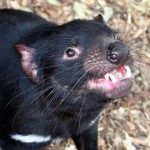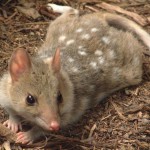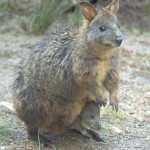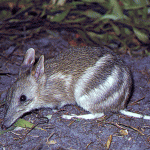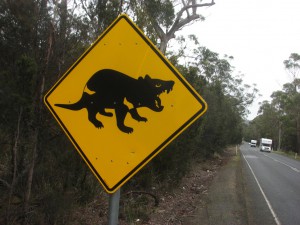An interesting article on the devil, and a possible influence on feral cat behaviour
This article on the Conversation (download pdf here) from a few weeks ago captured my interest – enough for me to post an online comment in response – and I thought it would be worth sharing with you… along with a few other thoughts.
As someone who is very interested in the cascading effects of apex predators, the loss of small-medium sized mammal fauna from the mainland and the relatively recent demise of the devil and thylacine from mainland Australia – the article got me thinking again about the ‘black and white’ arguments that people have about predators in our landscape. The argument often being that the only way to curb the impact of feral predators on our native fauna is for humans to try to eradicate or suppress them. As we know, this is a very expensive, never-ending exercise and any benefit that is derived (outside of islands, feral-proof exclosures or fenced peninsulas) is not lasting if you stop intervening, due to rapid recolonisation from the surrounding landscape. However, inside of large exclosures, like those managed by the Australian Wildlife Conservancy, you can also end up with an overabundance of some threatened species due to there being no predation pressure at all – a bit of a conundrum…!
Clearly the process of ‘predation’ itself is not unnatural or undesirable in an ecosystem – in fact, in the part of south-eastern Australia that I call home, if you went back 200 years you would find three specialist mammal predators: the dingo, tiger quoll and eastern quoll. Go back 5000 years (or thereabouts, pre-dingo times) and you would have found four: the thylacine, devil, tiger quoll and eastern quoll – all munching away on bandicoots, bettongs and other native prey.
Compare that to today and in their place we have the fox and cat, which are implicated in the extinction of several species, and nothing to keep them in check except for the well-intentioned efforts of people that may buy us time, but are ultimately unsustainable in evolutionary time/terms.
The reason the Conversation article struck a chord with me is because it has begun to expose the ‘shades of grey’ in the whole predation debate. People have wondered for a long time whether devils apply predation pressure on cats in Tasmania, but the article says that devils don’t appear to influence cat numbers. But that is not the end of the story, as the researchers do have good reason to believe that devils influence cat behaviour – and that such a change of behaviour (removing constraints over cat activity periods) caused by the absence of devils in some areas, may be responsible for declining quoll numbers through cat predation of juvenile quolls at times of the day when they weren’t previously encountering each other.
So the same number of cats in the landscape can potentially have a less detrimental impact on native fauna, simply because their behaviour has to be modified as a result of devils being present in the same areas of habitat. Is this the secret that explains why Tassie (at least up until now) has the best record for mammal extinctions in Australia?
Now just for a moment, imagine if we trialled the reintroduction of devils on the mainland, to see if they can cause similar avoidance behaviours in feral predators (cats and foxes) that currently have the edge on our nocturnal native wildlife? If it worked it would be a game changer, as we’d no longer be talking about human-induced suppression as the only feasible goal, if behaviour modification achieves an acceptable result for our ecosystems. It would potentially open the door to a self-sustaining solution, and maybe even enable the reintroduction of now extinct species, still in the wild in Tasmania, such as eastern-barred bandicoots, pademelons, bettongs and quolls.
While Australia still has the devil (now a threatened species in its own right), we have the opportunity to give this concept a try – what do you think? It is a long shot, but do we really have anything to lose?


